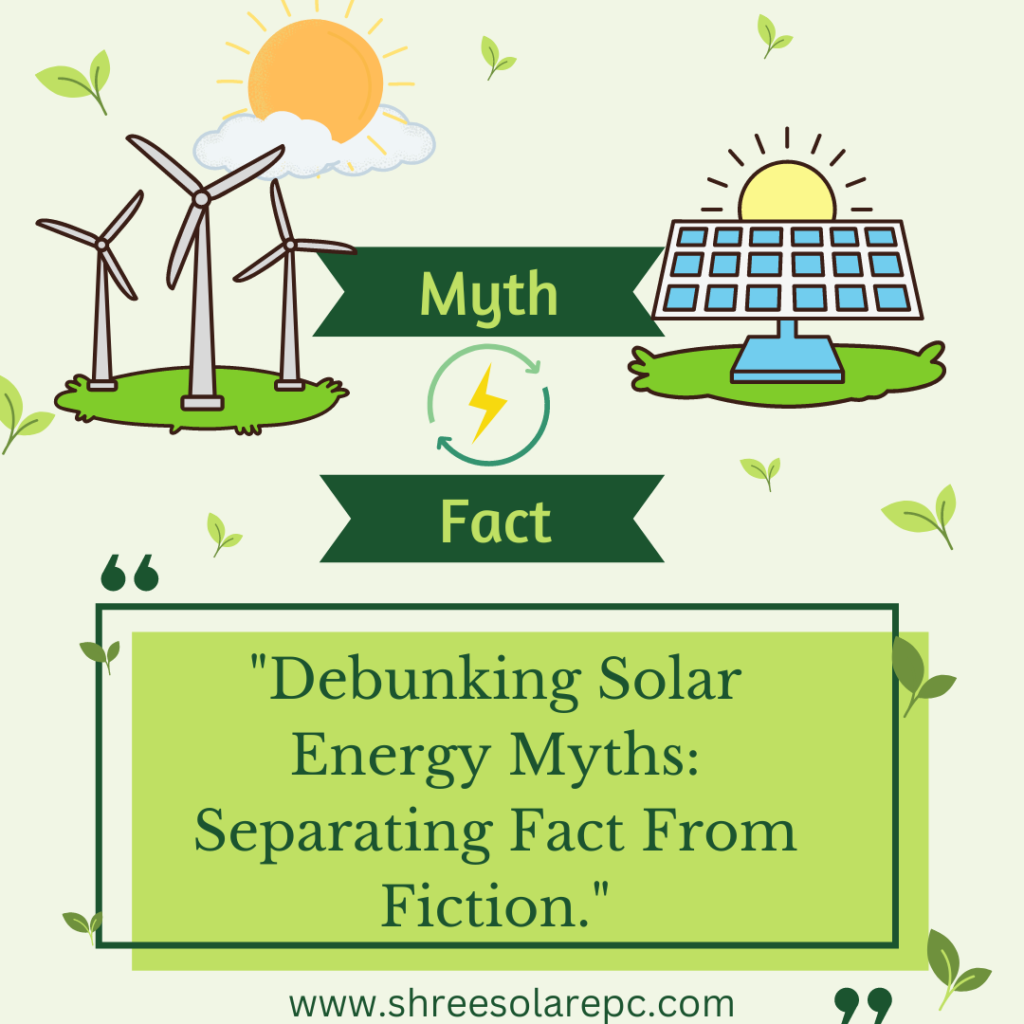"Debunking Solar Energy Myths: Separating Fact From Fiction."
Published on 31 July, 2023
In the pursuit of a sustainable and eco-friendly future, solar energy has emerged as a frontrunner in the race to combat climate change and reduce our dependence on fossil fuels. As the sun bathes our planet in an abundant and renewable energy source, solar power presents an enticing solution to power our homes, businesses, and industries while leaving a smaller carbon footprint.
However, despite the remarkable progress and widespread adoption of solar energy, persistent myths and misconceptions continue to cast shadows on its full potential.
In this blog, we embark on a journey to dispel the clouds of misinformation and illuminate the truth behind solar energy myths. By exploring these myths and presenting verifiable facts, we aim to empower readers with the knowledge to make informed decisions about harnessing the sun’s energy for a cleaner, greener, and brighter tomorrow.
Join us as we uncover the truth behind common misconceptions, address skepticism, and unravel the incredible capabilities of solar energy. From examining the effectiveness of solar panels in various climates to understanding the environmental impact of their production, we leave no stone unturned in our quest to separate fact from fiction.
Myth 1: Solar Panels are Expensive and Not Cost-Effective
Fact : Long-term Benefits Far Outweigh the Upfront Investment.
While it is true that the initial installation cost of solar panels can be significant, their long-term benefits far outweigh the upfront investment. The cost of solar panels has dropped significantly over the years, making them more affordable than ever before. Moreover, various government incentives, tax credits, and rebates are available to offset installation costs. Once installed, solar panels generate free electricity for years, resulting in substantial savings on utility bills over their lifespan, typically 25-30 years.
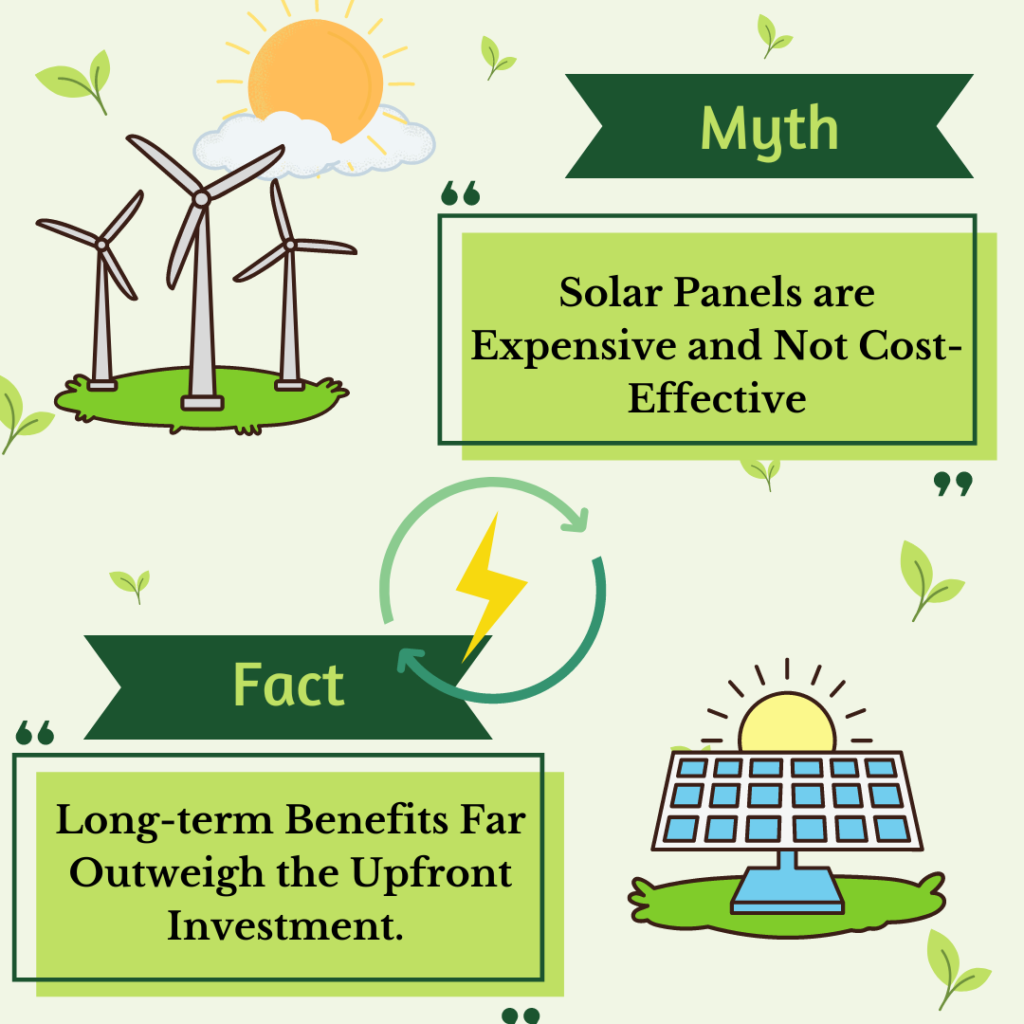
Myth 2: Solar panels require constant maintenance.
Fact: Solar panels are low-maintenance and durable.
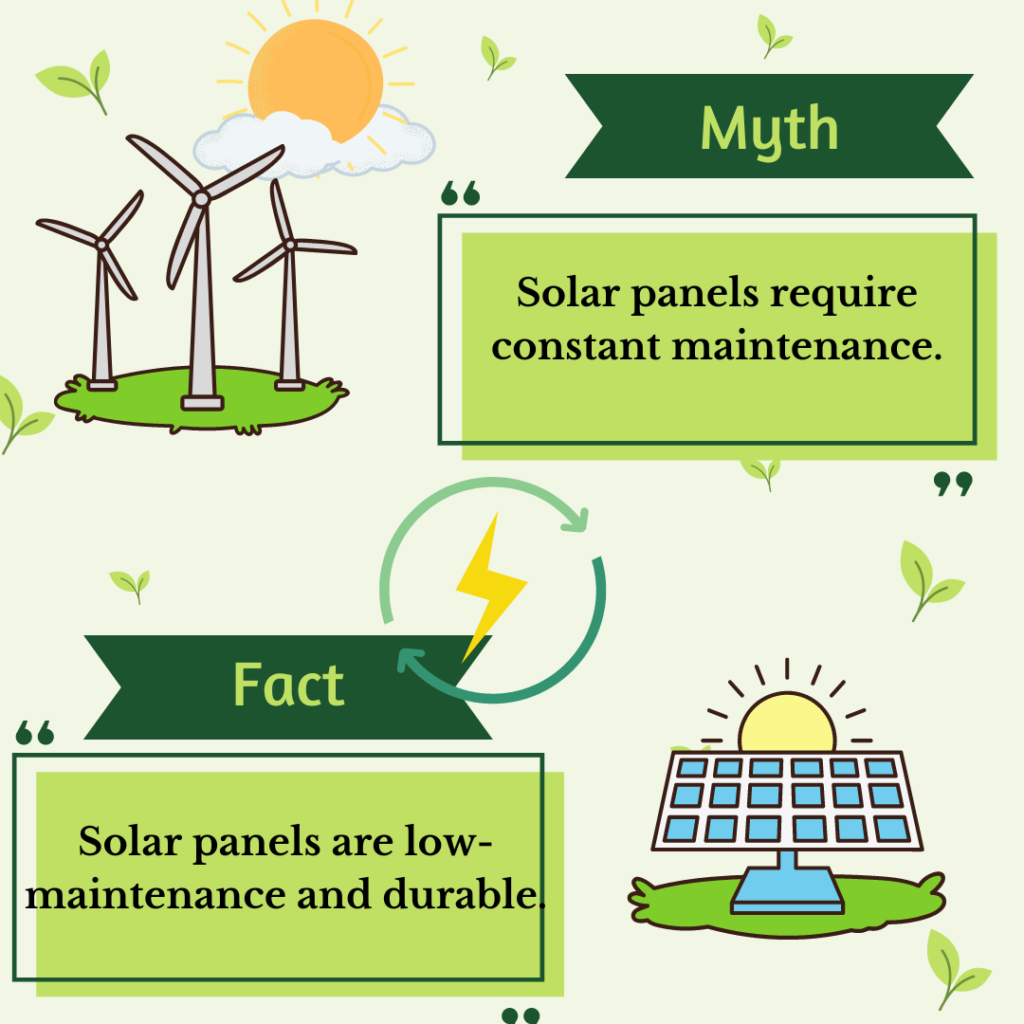
Another common myth is that solar panels require frequent maintenance, which adds to the overall cost. In reality, solar panels are designed to be low-maintenance and durable. They have no moving parts, reducing the risk of mechanical failure. Occasional cleaning to remove dust and debris is usually sufficient to keep them performing optimally. Most solar panels come with warranties of 25 years or more, highlighting their durability and reliability. Many solar panel manufacturers also offer warranties covering maintenance and repairs, adding to the ease of ownership.
Myth 3: Solar energy is too expensive for the average homeowner.
Fact: Solar installation costs have significantly decreased, and it's a long-term cost saver.
In the past, solar energy systems were expensive, making them inaccessible to many homeowners. However, significant advancements in technology and increased demand have led to a substantial reduction in solar panel prices. Additionally, many governments and organizations offer incentives, tax credits, and rebates to encourage the adoption of solar energy, further reducing the initial investment cost. Over time, the energy cost savings can lead to a return on investment, making solar energy a financially viable option for homeowners.
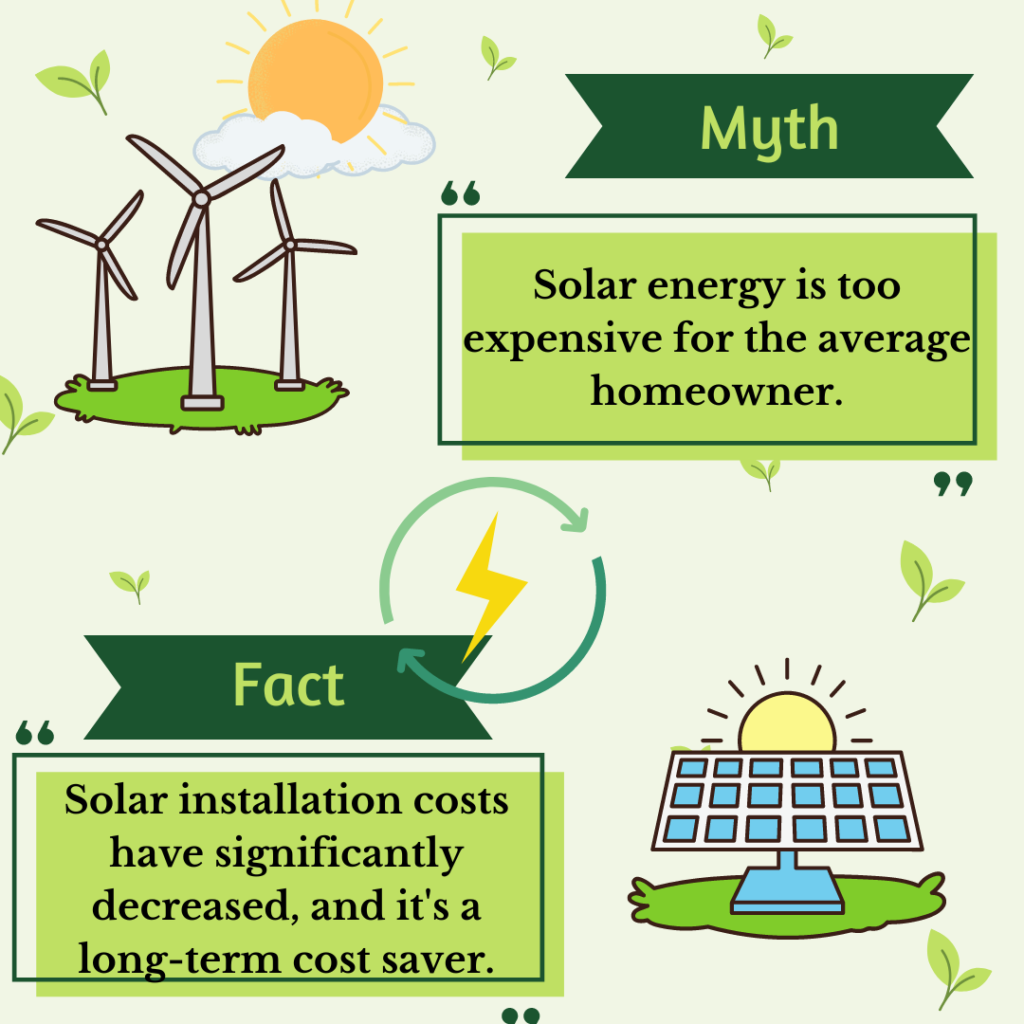
Myth 4: Solar Energy is Only Suitable for Sunny Climates
Fact: Solar panels work even in cloudy and overcast conditions.
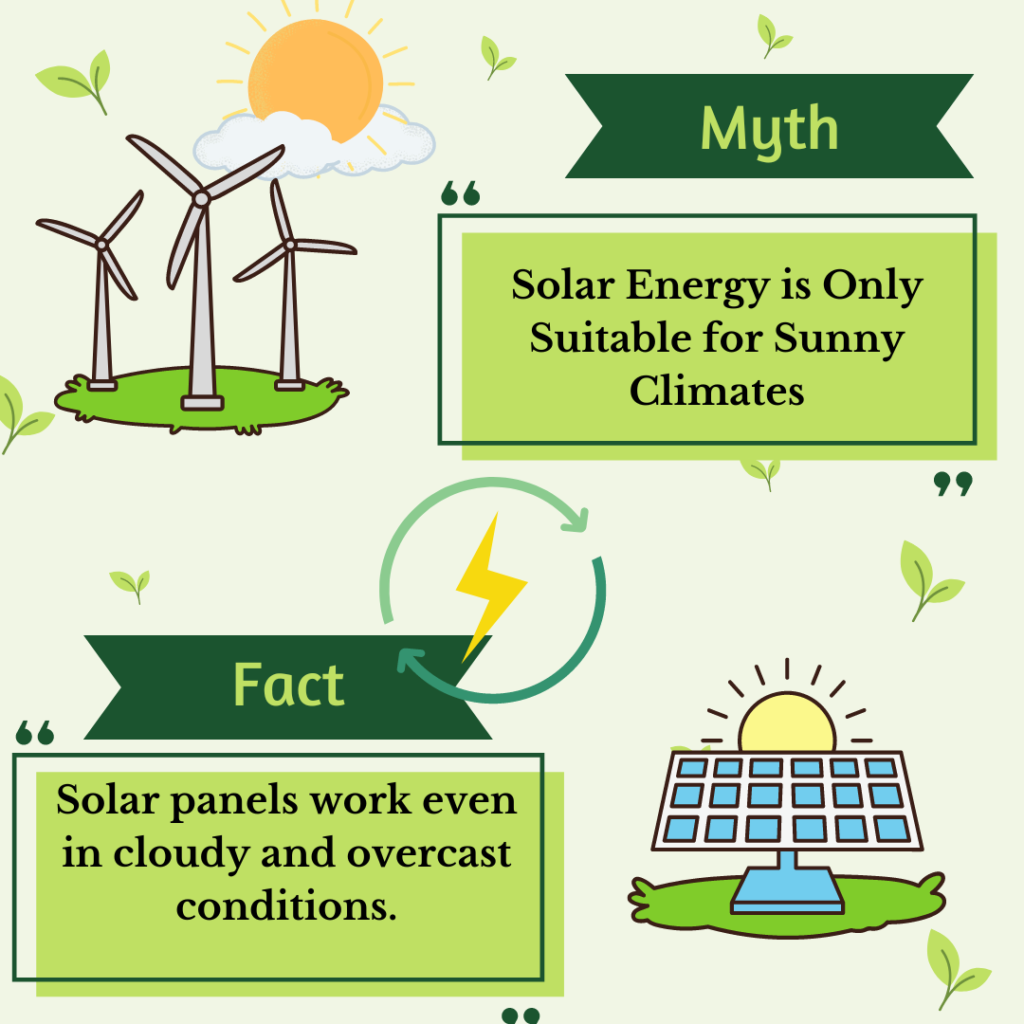
While solar panels do perform better in sunnier climates, they can still generate electricity in areas with moderate sunlight. Germany, for example, is a global leader in solar energy adoption, despite having less solar irradiance than many sunnier regions.
One of the most prevalent misconceptions about solar energy is that it is only viable in regions with abundant sunshine. While it’s true that solar panels are most efficient in direct sunlight, they can still generate electricity on cloudy or overcast days. Modern solar panels are designed to capture diffuse sunlight, and advancements in technology have made them more effective in lower light conditions. In fact, some countries with less sunny climates are among the leading adopters of solar power.
Myth 5: Solar panels will damage your roof.
Fact: Properly installed solar panels can protect and extend the life of your roof.
One of the misconceptions associated with solar panel installation is that it can damage the roof and lead to leaks. In truth, when installed correctly, solar panels can actually shield the roof from the elements, protecting it from rain, hail, and UV radiation, which can extend its lifespan. Reputable solar installation companies take proper precautions, such as using waterproof sealants and mounting techniques, to ensure the roof remains intact and leak-free.
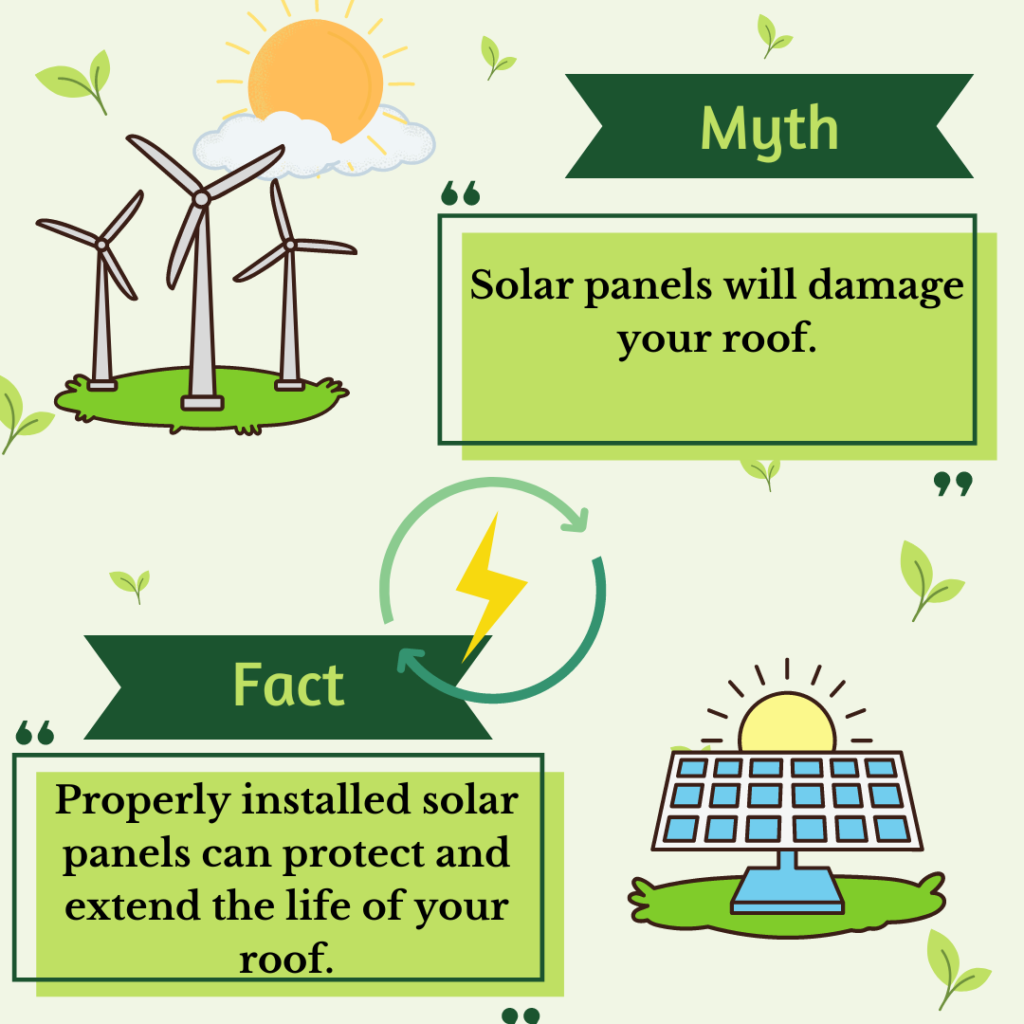
Myth 6: Solar energy is only suitable for new constructions.
Fact: Solar panels can be installed on existing buildings and homes.
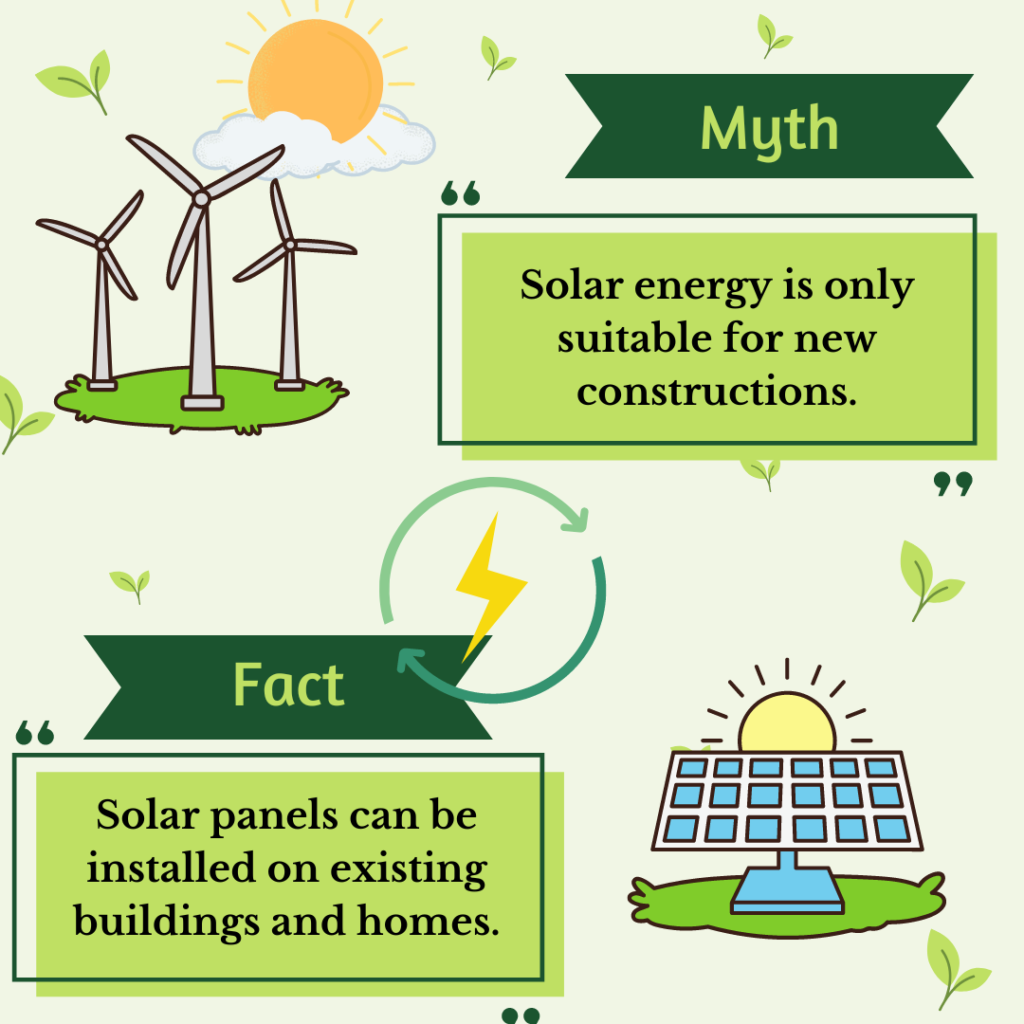
Some people believe that to benefit from solar energy, one must build a new home or structure. However, solar panels can be installed on existing rooftops or as ground-mounted systems, making them accessible to homeowners and businesses alike. Retrofitting existing buildings with solar panels can help reduce their carbon footprint and electricity bills.
Myth 7: Solar Energy is Harmful to the Environment
Fact: Solar energy is one of the cleanest sources of electricity available.
The process of generating electricity from solar panels produces no greenhouse gases, contributing to reducing carbon emissions and combating climate change. While the manufacturing and disposal of solar panels do have some environmental impact, it is significantly lower compared to the emissions associated with conventional fossil fuel-based power generation.
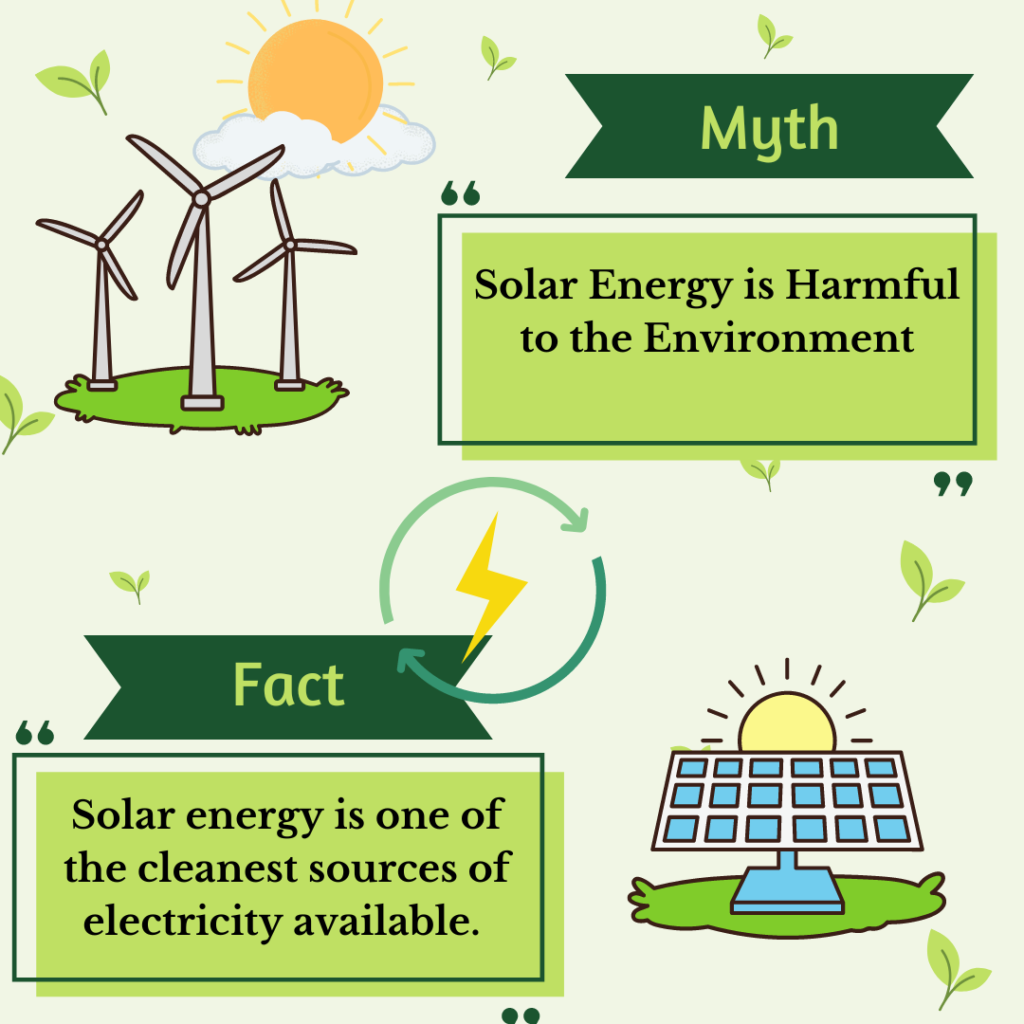
Myth 8: Solar energy is not practical for large-scale electricity generation.
Fact: Solar power can effectively contribute to large-scale energy production.

Some skeptics argue that solar energy cannot meet the energy demands of a growing population or support industries that require substantial power. However, solar energy is entirely scalable. Large solar farms with vast arrays of solar panels are capable of generating significant amounts of electricity, contributing to the grid and supplementing traditional energy sources. When combined with other renewable energy sources and energy storage solutions, solar power can form an integral part of a sustainable energy mix.
Solar energy is a game-changer in the transition to a sustainable and cleaner future. By debunking common myths surrounding solar power, we hope to promote a better understanding of its potential and encourage its wider adoption. From debunking the misconception that solar panels only work in sunny climates to highlighting their cost-effectiveness and scalability, it’s evident that solar energy is a reliable and viable source of renewable power. As technology continues to advance, solar energy will play an increasingly vital role in our journey towards a greener planet. Let’s dispel the myths, embrace the facts, and harness the power of the sun to create a brighter tomorrow.

